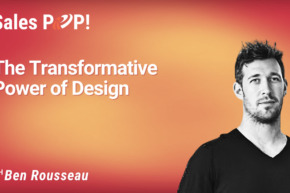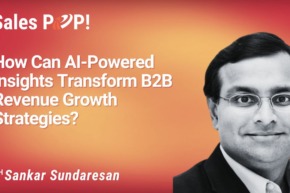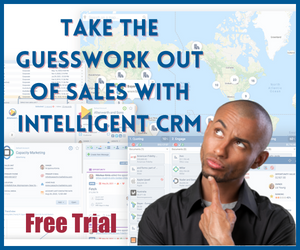Why do some sales pitches land perfectly while others fall completely flat? It’s a question that keeps business owners up at night. In a world overflowing with noise, simply having a great product isn’t enough. You need a strategy—a reliable system for turning curious prospects into committed customers.
Enter Michael Barbarita. As a fractional CFO, strategic specialist, and author of Powerful Business Strategies, he’s spent decades decoding the science of sales. During a recent Expert Insight Interview with host John Golden, Barbarita unveiled his master key: the Conversion Formula.
This isn’t your typical sales advice. It’s a time-tested, four-step blueprint rooted in historical marketing principles and refined in the trenches of retail, manufacturing, and service industries. Forget pushy tactics; this is about a deep psychological connection.
Let’s break down this potent formula and how you can apply it to your business today.
The Core Idea: It Starts With the Problem
Barbarita’s research led him to a foundational truth: effective marketing doesn’t start with your solution. It begins with the customer’s problem. But it goes deeper than that.
“You have to understand the problem the customer has—the problem they don’t want—and the solution they want but can’t find.” — Michael Barbarita
His Conversion Formula is a sequential process. Like a chemical reaction, you can’t skip a step and expect the same result. Each phase builds on the last, guiding a prospect from awareness to action.
Step 1: Captivate by Nailing the Real Problem
Before you can sell anything, you have to earn their attention. “Captivate” isn’t about flashy graphics or clickbait headlines. It’s about holding up a mirror to your customer’s exact pain point, so they feel seen and understood.
How to Put It Into Action:
- Become a Pain Point Detective: Don’t guess. Use surveys, read reviews (of your product and your competitors’), and conduct interviews to uncover the real frustrations your audience faces.
- Echo Their Exact Language: Listen to the specific words and phrases your customers use to describe their struggles. When your marketing message uses their language, it builds instant rapport.
- Lead with Empathy, Not a Pitch: Your initial message should communicate, “I get it. I understand what you’re going through.”
For example, when Barbarita was in the ski retail business, he realized customers didn’t just want skis; they feared being sold the wrong skis by a commission-hungry salesperson. By directly addressing this distrust, he captivated his audience before ever mentioning a product.
Step 2: Fascinate with a Genuinely Unique Solution
Once you have their attention, it’s time to “Fascinate” them. This is where you introduce your unique solution—the one they’ve been hoping for but couldn’t find. It has to be more than just another option; it must be a revelation.
How to Put It Into Action:
- Pinpoint Your “Only”: What is the one thing you offer that no one else does? Lead with that differentiator.
- Solve the Unspoken Problem: Can your solution address a secondary pain point they haven’t even mentioned? This creates massive value.
- Flip the Industry Script: Every industry has negative stereotypes (e.g., used car salesmen are dishonest, contractors are unreliable). Position your solution as the direct antidote to that perception.
In the frozen cookie dough industry, Barbarita’s team learned customers didn’t want to tie up their main oven for a small batch of cookies. The solution? They offered a free convection oven with every opening order. It was a fascinating, unique solution that no competitor could match.
Step 3: Educate to Build Unshakeable Trust
You’ve captured their attention and fascinated them with your unique approach. Now, you must “Educate” them on why your solution is the superior choice. This is the bridge from interest to trust.
How to Put It Into Action:
- Show, Don’t Just Tell: Use case studies, testimonials, data, and live demos to provide concrete proof.
- Explain the “Mechanism”: Don’t just claim your product is better; explain the underlying reason or proprietary process that makes it better.
- Address Objections Before They Arise: Proactively tackle the “what ifs” and “buts” running through your prospect’s mind.
This stage is crucial. Captivate and Fascinate buy you a moment of their time. Education is what earns you their trust and makes them receptive to an offer.
Step 4: Close with a Truly Irresistible Offer
This is where the magic happens. The “Close” isn’t about a clever line; it’s about structuring an offer so compelling, so packed with value, that saying “no” feels like a mistake. Barbarita breaks this down into five critical components.
The Anatomy of an Offer They Can’t Refuse
- Scarcity & Urgency: The fear of missing out (FOMO) is a powerful motivator. Use limited quantities (“Only three spots left”) or time-sensitive bonuses (“Offer ends Friday”) to encourage immediate action.
- Risk Reversal: Remove every ounce of risk from the customer’s decision. This is where money-back guarantees, free trials, and performance promises shine. In his ski shop, Barbarita offered a “ski guarantee”—if you didn’t love the skis after trying them on the mountain, you could bring them back. This eliminated the buyer’s biggest fear.
- Adding More Value (Not Discounting): Instead of slashing prices, stack the value. What else can you add to solve another problem or enhance their experience? The free convection oven is a perfect example. It added immense value without devaluing the core product.
- Packaging and Bundling: Increase the perceived value by combining your core product with complementary services or items. Think of a software package that includes setup, training, and 90 days of premium support.
- Indifference to the Outcome: This is a mindset shift. You must be emotionally detached from whether you make this specific sale. Your focus should be on helping the customer find the right solution, even if it isn’t yours. This confidence is palpable and replaces the stench of desperation with an aura of authority.
The Secret Weapon: Knowing Your Customer Lifetime Value (LTV)
How could Barbarita afford to give away a $200 oven? Because he knew his numbers. Understanding your Customer Lifetime Value (LTV) is the key that unlocks the ability to create truly irresistible offers. When you see a customer who will spend thousands with you over time, investing a couple of hundred dollars upfront to acquire them becomes a simple business decision.
Don’t operate in the dark. Calculate your LTV and let it guide your marketing investments.
Final Takeaway: It’s a Transformation, Not a Transaction
Michael Barbarita’s Conversion Formula is more than a sales tactic; it’s a fundamental shift in perspective. It moves you from a transactional mindset (“How can I close this deal?”) to a transformational one (“How can I solve this person’s problem so effectively that their life or business improves?”).
By deeply understanding your customer, addressing their core problems, and crafting an offer that removes all risk, you don’t just make a sale. You build trust, create loyal fans, and make your competition irrelevant.
Our Host
John is the Amazon bestselling author of Winning the Battle for Sales: Lessons on Closing Every Deal from the World’s Greatest Military Victories and Social Upheaval: How to Win at Social Selling. A globally acknowledged Sales & Marketing thought leader, speaker, and strategist, he has conducted over 1500 video interviews of thought leaders for Sales POP! online sales magazine & YouTube Channel and for audio podcast channels where Sales POP! is rated in the top 2% of most popular shows out of 3,320,580 podcasts globally, ranked by Listen Score. He is CSMO at Pipeliner CRM. In his spare time, John is an avid Martial Artist.








Comments